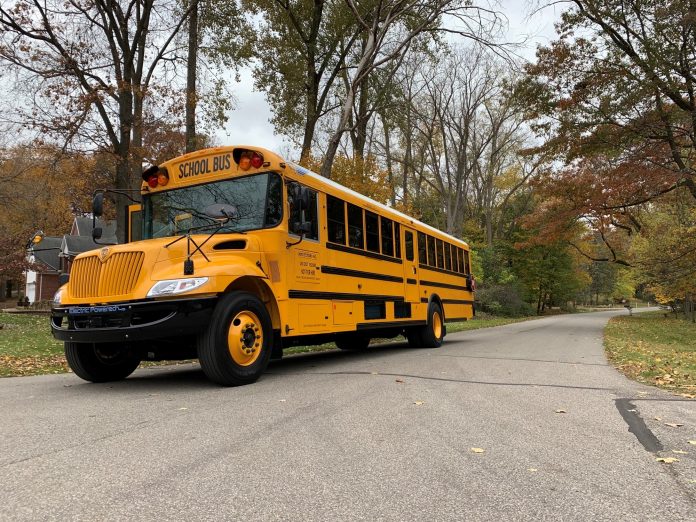Electric school buses are the industry’s shiny red bicycle, and as such the topic commands a lot of attention and money. It’s no coincidence that this month’s coverage is timed with round two of the five-year, $5 billion Clean School Bus Program, with applications for the new competitive grant due this summer.
Amid the funding frenzy, $32 billion in total funding for zero-emission technology is being handed out over the next four years, fleet operators and especially those who work for school districts have some uncomfortable decisions to make over the coming years, some would argue today. With an apparent battery-electric future ahead, how do school districts and bus companies proceed with taking the necessary steps to start preparing now? Several articles this month are designed to help answer that question. At least begin to answer it.
First and foremost, school districts must start talking now to their local utilities or cooperatives in preparation for that inevitable day. Increasingly, tools exist to help school districts navigate this new terrain.
Yet no fleet will go electric overnight or even by next year. First Student, the largest school bus operator in North America, said it will take until 2035 to convert two-thirds of its fleet, 30,000 buses, to electric. That’s a lot of vehicles in a lot of locations. But it’s easy to see why smaller and rural districts with far less purchasing, staffing and political power are extremely reticent.
There are promising options for the short and long terms. A growing conversation in clean transportation circles over the past couple of years has been the promise of low carbon, carbon neutral and eventually carbon negative fuels. This was apparent at the Advanced Clean Transportation Expo last month in Anaheim, California.
In full disclosure, School Transportation News is a media sponsor, and the experience has immensely helped with magazine coverage and the offerings presented at our STN EXPO conferences. But beyond the business sense the event makes, the conversations at ACT Expo have validated the need for many power options for today’s and tomorrow’s medium and heavy-duty trucks and buses. Last year, the main message I walked away with was, similar to educating children, going green will take a village. This year, the show took the next step by laying out pathways going forward that utilize various renewable fuels.
For school buses, the most obvious solution amid the latest tightening of federal emissions regulations is renewable diesel (RD), a drop in fuel substitute derived from either feedstock waste, vegetable oil or biomass products that the U.S. Department of Energy’s Alternative Fuels Data Center cites as reducing carbon intensity by 65 percent compared to petroleum diesel.
Of particular interest to me, as Matt Leuck, the technical manager for renewable road transportation at Neste, shared with me at ACT Expo, RD refiners use a process called isomerization to change the shape of the molecule to set the cloud point as low as they want. This eliminates the cold start issues that have plagued users of diesel and biodiesel blends for years.
However, RD is not readily available to student transporters who don’t live on the West Coast, where Low Carbon Fuel Standard credits underwrite the premium prices. Leuck noted that where those credits create the demand, supply will inevitably follow. There is promise that New York might soon pass LCFS with several other northeast states jumping on board. The RD industry, meanwhile, is looking to hit its goal of producing 5 billion gallons next year.
What about biodiesel? It differs from RD because it is not refined. The much simpler production process requires it to be blended with regular diesel. Yet an advanced fuel technology pilot was recently greenlit in California to test the viability of a diesel engine operating on 100 percent biodiesel.
Meanwhile, renewable propane is available now, though like RD the volumes are not there yet to support a massive cutover. But renewable propane, especially once it can be blended with dimethyl ether, offers fleet operators a longer term solution than RD, as manufacturers plan to sunset diesel by the end of the next decade. The Propane Education & Research Council also notes that renewable propane currently outpaces the availability of electricity from utilities. For example, renewable propane charged all the EVs at the ACT Expo ride and drive, and it will do the same at this month’s Green Bus Summit at STN EXPO Indianapolis.
And don’t forget about renewable natural gas (RNG), which is available to a loyal yet small sample size of school buses.
The bottom line for the electric anxious is options do exist. The path to zero emissions is looking more and more likely to be paved by a host of fuels and energy that make the most business sense for individual operations.
Editor’s Note: As reprinted in the June 2023 issue of School Transportation News.
Related:(STN Podcast E159) ACT Expo Recap: Diesel’s Longevity, New Electric School Buses + Alt. Transportation Convo
Related: How receptive is your operation to adopting electric vehicles?
Related: Getting an ACT Together
Related: STN EXPO Reno Keynote Speaker Identifies Risk Factors Onboard the School Bus
















